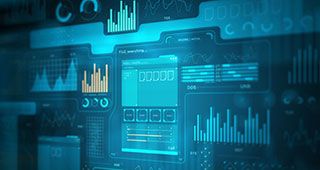Telecommunications operators are caught between two seemingly irreconcilable pressures: the demand for a better customer experience and the need to reduce costs. Choosing one or the other isn’t an option. To compete effectively, they must transform the way they operate—embracing autonomous, customer-centric services that simultaneously improve service availability, reliability, and proactivity while materially decreasing their total cost of operations.
In meetings with over 100 communication service provider (CSP) leaders over the last six months, BMC has gained deep insights into the challenges facing the industry today. In this blog, we’ll outline the objectives the modern CSP is driving toward and an operational and technology vision for achieving them.
Achieving differentiation in a commoditized market
As telecommunications markets reach saturation, CSPs seek growth by capturing market share from competitors. Since they can’t set themselves apart through core connectivity services, which have essentially become commoditized, they must instead seek differentiation through the experiences they offer—and that means meeting the expectations of a highly demanding generation of consumers.
Millennials and Generation Z (Gen Z) customers have a firm perspective on what digital services should feel like. As digital natives, they’ve grown up with slick, seamless, real-time experiences on apps like Facebook, Netflix, Google, and Amazon. To compete effectively and grow market share, CSPs must now meet the same standard—without increasing prices or undermining already razor-sharp profit margins.
CSP leaders shared with BMC three key themes that are defining their response to these challenges:
- Operational excellence—Improving overall customer experience through service availability, reliability, and proactivity
- Cost-effectiveness—Reducing total operational costs by an average of 30 percent
- Autonomous operations—Delivering autonomous operations and zero-touch event management by the end of 2026
Achieving this future vision will hinge on a set of interrelated shifts across internal and customer-facing technologies.
Efficient and frictionless operations at scale
Traditional IT and network operations are often slowed by the need for admins to navigate a complex ecosystem of monitoring tools and data silos. Evolving toward fully autonomous service operations will remove these bottlenecks for:
- Zero trouble—Eliminating trouble and disruption before it affects customers through self-healing and elastic technology, reducing operating costs while improving service
- Zero touch—Automating the entire resolution chain when disruption does occur, from detection through to remediation, to fix problems faster
- Zero wait—Eliminating manual handoffs and activities to enable real-time fulfillment for new service requests
Empowering customers with self-service
For customers, self-service provides a sense of control, autonomy, and immediate gratification. For operators, allowing customers to take on operational tasks can reduce cost while improving the customer experience. This capability can take three forms:
- Self-serving—Being able to order new products and services directly without having to speak to an agent
- Self-fulfillment—Executing these requests and changes without waiting for operations personnel to handle it
- Self-assurance—Gaining transparent, real-time access to metrics for the services that are meaningful to them
Four key technology tenets for future CSP operations
Realizing this vision for fully autonomous service operations and customer empowerment will depend on four principles:
- Removing human bottlenecks—Leveraging artificial intelligence (AI) throughout operational systems will both increase responsiveness and remove the time and staffing required for human decision-making.
- Taking an SRE approach to risk—Site or service reliability engineering (SRE), a foundation of operations for most digital companies, seeks to balance the need for change with its potential impact on service. Instead of relying on manual, ticket-based workflows and change assessments, operators will rely on AI to make these risk calculations faster and more accurately.
- Operationalizing AI—Deploying AI isn’t simply a matter of buying a product. CSPs will need to feed the system with data, train and assess their models, and ensure traceability and explainability for the decisions being made. This represents a new set of capabilities to build out within the organization.
- Building data pipelines—Data is the life’s blood of autonomous operations. CSPs will need to ensure that they can deliver the right data to the right places at the right time, and do so with the right levels of quality and transparency.
In our next blogs, we’ll discuss these tenets in depth and explore the role of BMC solutions in making this vision a reality.







